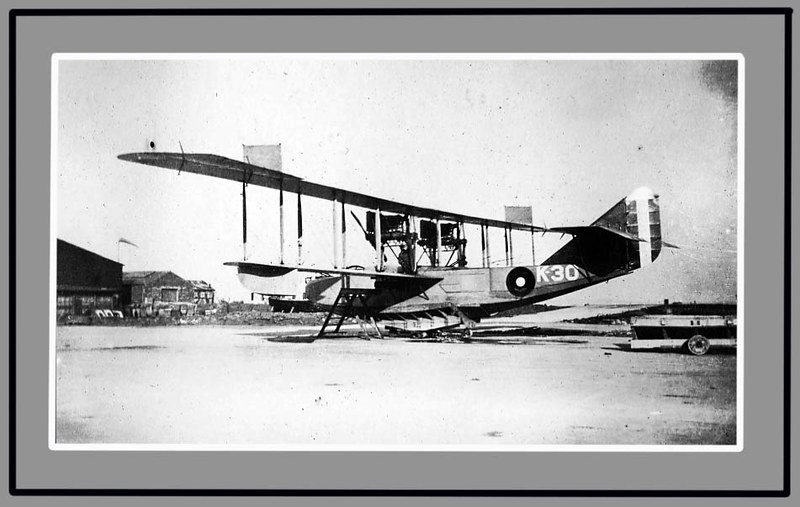 Killingholme
Killingholme
Validation date: 03 08 2012
Updated on: Never
Views: 8393
See on the interactive map:
53°40'12"N 000°14'42"W
runway: n/a - water
Killingholme seaplane base (RNAS Killingholme, also briefly known as RNAS Immingham) was an airfield on the Humber Estuary, 230 kilometers north of London.
It was located immediately north and adjacent to the Admiralty Oil Depot. It was established as Naval Air Station Killingholme and operated by the Royal Navy by Aug 1914, although hutted accommodation and a metalled road were not established until December 1914. As such it replaced the slightly earlier Naval Air Station at Skegness. In mid 1914, the first hangar was erected, a wood and canvas Bessoneau type.
The first operational sortie was made on 21 August 1914, a routine patrol mission by Sopwith Scouts. Four 68x77ft seaplane sheds were completed in September 1914. In October, the Bessoneau hangar was dismantled and a seaplane slipway measuring 700x60ft was constructed. A further hangar measuring 177x56ft was added as the complement of aircraft increased. German Zeppelin raids on Humberstone, Owmby and Gainsborough meant Killingholme-based planes were pressed into interceptor duties. The stations principal missions were patrol duties to protect the local oil installations and nearby ports and to repell Zeppelin attacks. It also served as a seaplane training center and had a limited amount of shore based aircraft.
The large size of the newer seaplanes coming into service dictated the need for an even larger hangar and during 1916 the largest one ever constructed in the county was completed, measuring an enormous 800x200ft. Later that year, two further hangars measuring 200 x 100 ft were constructed as well as a further two slipways measuring 850 ft long and 35 ft wide. For submarine patrols and anti-Zeppelin missions it used Sopwith Babies as early as May 1916. Although it was not ideally located due to the strong tides in the Humber estuary, there were over 900 men and sometimes in excess of 100 aircraft at the base. This made Killingholme one of the leading seaplane bases and to accomodate the aircraft it featured a massive platform.
Felixstowe flying boat (based on Curtiss H-12) pictured about to make a water landing, probably at Naval Air Station (NAS) Killingholme, England, 1918 (photo via Batman_60, on Flickr).
Felixstowe flying boat on a cart at Naval Air Station (NAS) Killingholme, England, 1918 (photo via Batman_60, on Flickr).
From Mar 1918 Killingholme was to operate as a USN Seaplane Station. On 20 July 1918 it was handed over to the command of the United States Navy under Lieutenant Commander Kenneth Whiting. American naval aviators flew British Short sea-planes on maritime patrol from the station. They were also equipped with the Curtiss H-16, a twin-engine tractor biplane seaplane. Duties for the Americans included convoy protection in the North Sea, deterring German sweepers from disturbing mine fields in the approaches to the British coast, anti-submarine warfare and long-range reconnaissance. In Nov 1918 the coastal flights of land planes (as opposed to seaplanes) of 18 Group were concentrated at RAF Killingholme.
The US Navy did not stay long beyond the end of the Great War and NAS Killingholme was handed back to the British on 6 January 1919. The RAF's 228 Sqn moved in before its disbandment on 6 Jun 1919, followed by 249 Sqn. The RAF closed the base in October 1919.
After the Station was disbanded, the hangers were taken to Grimsby and used to build the bus depot opposite the Police Station, on Victoria Street. The majority of the hangers still stand behind the brick facade which bears the text "Grimsby Corporation Tramways 1925".
Only the remains of the slipway still existed in 2012. The station was used for coal storage until about 2005. The brick Admiralty oil tanks that were built immediately south of the station, were taken down as late as 2007. They provided reference to the southern edge of the base. The entire area is now redeveloped for container storage and import of cars.
Grimsby - The Old Tram Depot This building is situated on Victoria Street South. The inscription on the facade reads "Grimsby Corporation Tramways 1925". The facade was built in 1925, but the constructions behind it are the old hangars of RNAS Kilingholme (© David Wright, licenced for reuse)

The area of the former RNAS Killingholme in 2007. Visible are the remains of the slipway and some circles left by the foundations of the old Admiralty Fuel Depot (Google Earth)
Only this section of the wooden slipway remained in February 2012 (AirfieldInformationExchange).